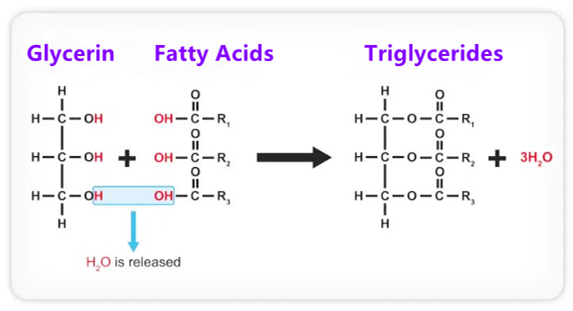
Want to hear from us?
Sign up to receive our latest email news, offers and updates.
Pet Food Industry News
December 07, 2022Dietary fats can be of animal or vegetable origin and can be solid or liquid at room temperature. Most of the fat in pet food is in the form of "triglycerides," which contain three fatty acids. There are about 40 different fatty acids in nature, which are the key components of lipids. The source of fatty acids can be animals or plants. Regardless of the source, the combination of fatty acids that can meet the special nutritional needs of different pets is what the body needs. The crude fat we usually see on the label refers to the petroleum ether extract during laboratory analysis. In addition to most of the fat, it also contains other substances that can be dissolved in petroleum ether, such as chlorophyll, carrots, etc. Vitamin ((the precursor of vitamin A), vitamin A, vitamin D, vitamin E and other fat-soluble vitamins, organic acids, resins, and other substances.

As one of the six major nutrients, fat plays a very important role, which is mainly reflected in the following five aspects:
1. Provide energy. Fat is the largest source of calories in the diet, providing more than twice as many calories per gram as carbohydrates or protein.
2. Provide essential fatty acids that cannot be synthesized in the body.
3. Carry fat-soluble vitamins (vitamins A, D, E and K), which can promote their absorption in the intestine.
4. Dietary fats help maintain skin health (help the skin retain moisture) and make the coat soft and shiny.
5. Improve the palatability of food while optimizing the texture of food.
Among them, essential fatty acids refer to fatty acids that cannot be produced in the body and can only be obtained through diet. Correspondingly, non-essential fatty acids refer to fatty acids that can be obtained through diet and synthesized in the body.
For dogs and cats, essential fatty acids include:
1. Linoleic acid, food sources: corn oil, soybean oil, sunflower oil
2. Arachidonic acid, food sources: only found in animal fats, such as chicken fat
3. Alpha linolenic acid, food sources: linseed oil, rapeseed oil, soybean oil
4. Eicosapentaenoic acid & docosahexaenoic acid, food sources: fish oil, fatty fish (salmon, trout)
Do pets need high fat or low fat ?
Food or nutrients, there is no good or bad, only suitable or not. Different physical conditions have very different nutritional needs. Whether high-fat or low-fat depends on the actual situation of the pet.
Types of pets suitable for a low-fat diet: Obese, overweight pets; pets who are less active as they age; pets who may suffer from gastrointestinal problems.
Types of pets suitable for a high-fat diet: active sporting or working dogs; pregnant or nursing pets; healthy pets who need to maintain their weight.
Welcome to surf more from www.ctpetfood.com for more informations about pets & pet treats, we have yummy pet treats for dogs and cats, and also news and knowledges in pet industry. Any inquiry, welcome to contact Mily Zhang mily@chaotaipet.com, feel freely to send inquiry or questions Mily, thank you !

Want to hear from us?
Sign up to receive our latest email news, offers and updates.
